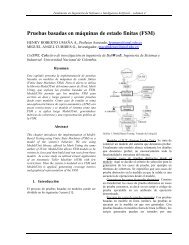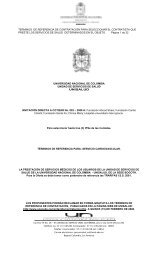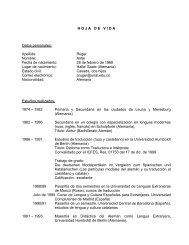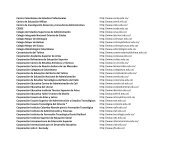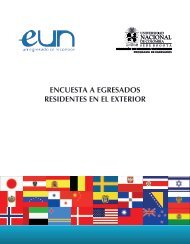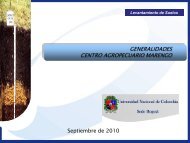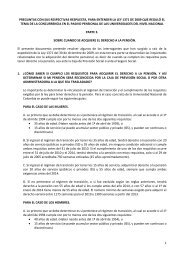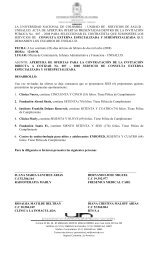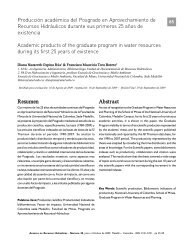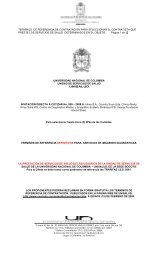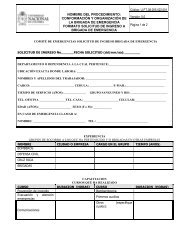ISO 11799
ISO 11799
ISO 11799
You also want an ePaper? Increase the reach of your titles
YUMPU automatically turns print PDFs into web optimized ePapers that Google loves.
<strong>ISO</strong> <strong>11799</strong>:2003(E)<br />
NOTE 1 The ratio between radiant flux with a wavelength shorter than 400 nm (i.e. ultraviolet radiation), and the total<br />
luminous flux, is measured in microwatts per lumen (µW/lm). With a view to preservation of documents, the accepted<br />
maximum limit for ultraviolet radiation is 75 µW/lm.<br />
NOTE 2 Fluorescent lamps fitted with diffusers or fibre-optic lighting are preferred. At present, fibre-optic lighting is only<br />
feasible for exhibition purposes.<br />
There shall be separate switches for the illumination of each of the sections that the repository is naturally<br />
divided into.<br />
At an easily accessible place outside the repository, there should be a central switch indicating whether all<br />
lights and other electrical circuits in the repository are turned off.<br />
6.6 Ventilation and air quality<br />
The repository shall be ventilated in such a way as to allow free circulation of air throughout, and to prevent a<br />
build-up of pockets of high relative humidity.<br />
If this does not occur naturally, a ventilation system should be provided. There should be fresh air intake, the<br />
amount depending on local circumstances.<br />
Specific attention should be given to ventilation around and within the shelving. To ensure this there shall be a<br />
distance of at least 150 mm between the floor and the lowest shelf, as well as between the average line of<br />
upper edges of objects stored on the top shelf and the ceiling. There shall also be a distance of at least<br />
50 mm between the top of the highest document on each shelf and the bottom of the shelf above. Gangways<br />
and aisles also allow ventilation (see also 6.8).<br />
The air in a repository should be kept free of air pollution, acidic and oxidizing gases and dust. Suggested<br />
maximum levels of the most common air pollutants are listed in informative Annex A. It shall be taken into<br />
account that some materials such as plastics for wrapping, paints and coatings for walls and shelves, etc. may<br />
emit noxious gases not only when burning (see 5.3. and 6.8.), but also by degassing and decomposing. When<br />
choosing materials for building, furniture and equipment, the amount of off-gassing should be taken into<br />
account. A certain time lapse (up to a couple of weeks, when the off-gassing of new materials is the highest)<br />
before putting new buildings, furniture and equipment into use is also advisable.<br />
NOTE Photographic, audiovisual and magnetic media are particularly sensitive to oxidizing pollutants, dusty air and/or<br />
other active compounds. Optical disks are also sensitive to oxidizing agents. Separate storage for these materials is<br />
usually necessary because of their lower temperature and humidity requirements, and because of the degradation<br />
products they give off.<br />
The air quality inside the repository should be monitored regularly for acidic and oxidizing gases and dust. The<br />
frequency should be such that seasonal or other repeated variations are discovered. This will make any<br />
irregular variation stand out more clearly.<br />
If a filter system is used, materials used for filtration shall in themselves not be damaging to the documents.<br />
Filter systems shall be regularly maintained.<br />
6.7 Room climate<br />
Repositories for archive and library materials should be kept at a cool temperature, ideally controlled in a<br />
building constructed according to the principles of climatic inertia (see 5.2).<br />
Repositories for archive and library materials shall be kept at a relative humidity below the point where<br />
microbiological activity occurs.<br />
NOTE According to the present state of knowledge, there is an increasing risk of microbiological activity above 60 %<br />
relative humidity, and increased brittleness at a very low relative humidity. The lowest acceptable humidity for long-term<br />
storage of archive and library materials is under discussion. For different kinds of materials, different limits are<br />
recommended, but there is no general agreement, either upon temperature or upon humidity. It has been established that<br />
Licensed to ING. MECC. - UNIV. TOR VERGATA/FULVIO MERCURI<br />
<strong>ISO</strong> Store order #: 648902/Downloaded: 2005-02-02<br />
Single user licence only, copying and networking prohibited<br />
6 © <strong>ISO</strong> 2003 — All rights reserved



